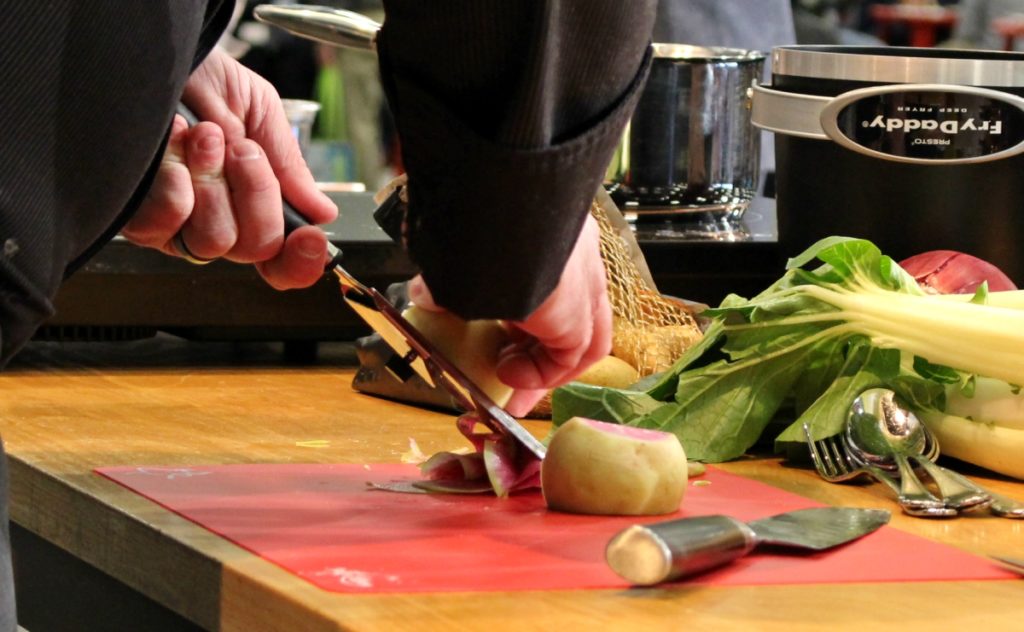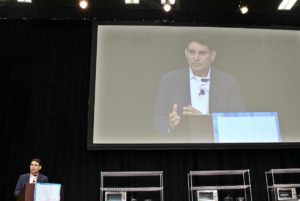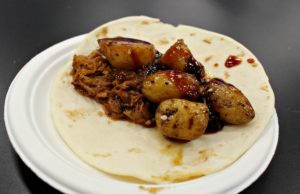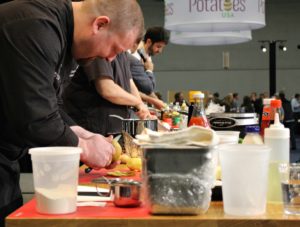
Trade, technology among major topics at Potato Expo 2019
The latest products, varieties and technologies available to the potato industry were on display at Potato Expo 2019 in Austin, Texas.
The two-day event was held Jan. 9-10 at the Austin Convention Center, although with all the committee and other industry meetings that took place, it was a four- or even five-day event for many in attendance.
Numerous education sessions were held on the subjects of trade, disease and pest management, storage, soil health, breeding, public relations and many other topics. There also was time to socialize, with plenty of on-site snacks — all featuring potatoes, of course — beverages and a big ending party that featured a performance by Grammy Award-winning western swing band Asleep at the Wheel.
Here are some other highlights.
Trade
Current trade relations with Mexico — one of the top importers of U.S.-produced potato products — remain strained, to say the least.

Although the United States-Mexico-Canada Agreement has been signed by leaders of the three nations, it has yet to be ratified by Congress. A 20-percent Mexican tariff on frozen potatoes from the U.S. remains intact for the time being.
U.S.-Mexico trade relations was the focus of the 30-minute closing address at Potato Expo 2019. It was delivered by Tony Payan, director of the Mexico Center at Rice University’s James A. Baker III Institute for Public Policy.
With all the political posturing from President Donald Trump over border security and Mexico President Andres Manuel Lopez Obrador over Mexican dependence from other nations — the United States, in particular — Payan will be concerned until the deal is approved and goes into effect.
“I suggest that all industries in the United States, including the agricultural industry and the potato sector, get all their guns out to Capitol Hill and figure out in way to communicate to both sides of the aisle to approve this agreement,” Payan said. “What if the president were to call USMCA off and link it to the fight over border security? That would be a disaster. It would be a disaster for all of us, and certainly for the agricultural industry.”
While Payan feels the USCMA is an improved version of NAFTA and needs to be ratified to provide stability, he doesn’t think the deal does nearly enough to improve agricultural trade.
In 2014, Mexico opted to allow the U.S. to import fresh potatoes up to 26 kilometers inside the border.
“Only about 7.5 million people live (in Mexico within 26 kilometers of the border). That’s it,” Payan said. “There are 130 million Mexicans.”
Payan made note of Mexico’s willingness to seek trade agreements with other nations, including Brazil, Argentina and the European Union. “The Europeans are chomping at the bit,” he said. Payan added, however, geographical and economic circumstances favor agricultural trade with the U.S.
Mexico only grows about 60 percent of the potatoes it consumes, Payan said. Inflation on potato prices is rising at five to seven times faster than the national rate.
“There is an undersupply of potatoes,” Payan said. “(The U.S. potato) industry can help Mexico supply its entire market at a much lower price, but Mexico will not allow that. … There are specific fights around tomatoes, around trucking, around potatoes that the two countries have with each other. Even though there is a larger agreement, there is a lot of work to be done at the lower levels with very specific industries, and I suggest this is one of those industries.”
Payan feels inroads need to be made with policy influencers in Washington, D.C. and Mexico City to make potatoes a bigger priority, but acknowledged it takes time and money.
“Energy is already doing that, but they have a lot more money to lobby,” he said, “but the potential is there.”
PHOTOS: Potato Expo 2019 in pictures
Nanotechnology
A nanometer is one billionth of a meter. Nanotechnology deals with dimensions of less than 100 nanometers, particularly the manipulation of atoms and molecules.

This technology has been used extensively in the medical field, but now it’s becoming more widely used in agriculture. One company diving in on nanotechnology is Vive Crop Protection. Co-founder and President Darren Anderson spoke on the subject at Potato Expo.
Nanotechnology isn’t going to improve the biology of soil on its own. It won’t kill insects, stop diseases or fertilize seeds. It will help products designed to do these jobs be more effective, Anderson said.
“There are some companies that sometimes claim that nanotechnology is magic; it can do anything. It really can’t,” Anderson said. “It’s really about delivering a pesticide, a fungicide, insecticide or, potentially, a nutrient to where it needs to go and then that product does its job once it gets there.”
Vive has used nanotechnology in its Allosphere technology, which delivers chemistry in a new way. For example, a mixture of fertilizer with an insecticide, nanotechnology makes the process much more effective than in the past.
“(Without nanotechnology) it would plug nozzles, cause you to have cleanouts and stop planting,” Anderson said. “If you’re using a pivot, it would clog your pivot. It was a pain.
“By using nanotechnology, by using these little shuttles, what we can do is make a much better mixing product.”
Thus far, Vive has focused on early-season disease and pest control, but is currently working on products to improve soil mobility and improve seed treatment.
More Potato Expo events, breakouts
Dim-Jan de Visser, CEO, Tolsma Techniek Emmeloord, discussed potato storage practices. De Visser touched on the advantages of using a carbon dioxide refreshing unit, which allows for fresh air that is cooled with internal air in a heat exchanger. This method keeps carbon dioxide levels at an optimum level, which significantly reduces energy costs.
De Visser added the industry should expect more data in the coming years on quality levels from the field determining more precise estimations of storage length. “It’ll get better results to the french fry factories by making the right decisions on when to take which lot based on the quality of the potato,” he said.

Food Network celebrity Simon Majumdar was in attendance to host the fourth annual Spud Nation Throwdown competition.
Three Austin-area chefs had 45 minutes to prepare potato-focused dishes for a panel of five judges. Contestants included Ryan Spesock of Cimarron Hills Country Club, Brian Moses of Olive & June and David Harap, an author, instructor and caterer.
In the end, Moses’ potato pastrami, smoked bone marrow and mustard vinaigrette was voted the winning dish.
The Supermarket Guru, Phil Lempert, was back to once again host The Eye, a live interview format that is broadcast during the Expo and across the Expo’s social media channels, both during and after the show.
Potato Expo opened The Eye up to other hosts as well this year, including Spudman. Our session included guests (click on links for video) Addie Waxman and Brian Winn of 1,4 GROUP, Tom Young of Food Defend, Keith Tinsey of Hansen-Rice Inc. and Idaho Grower Shippers Association President Shawn Boyle, who was named Spudman’s 2019 Emerging Leader Award winner.
The Potato Expo will return to Las Vegas in 2020. Dates are set for Jan. 14-15 at The Mirage.







